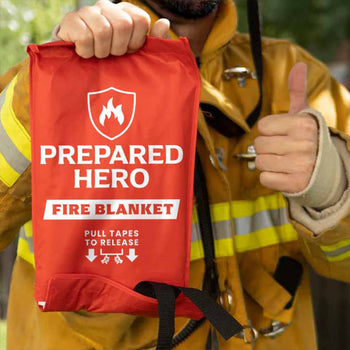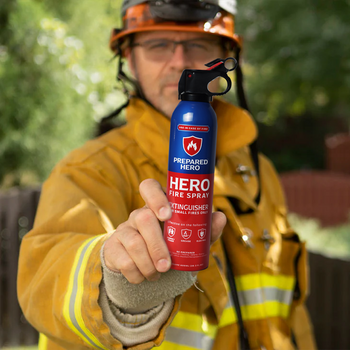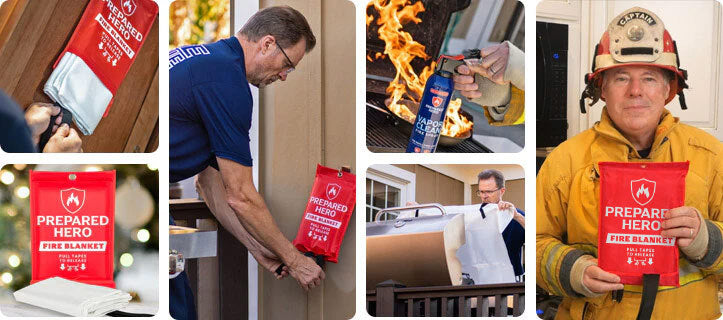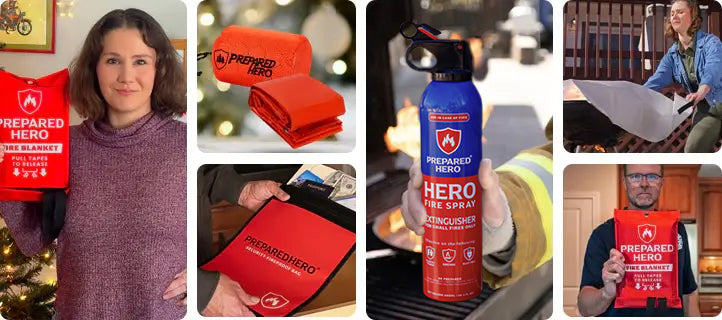Where you put your smoke detectors matters just as much as installing them. Proper placement makes sure they can detect...
Fire blankets put out small fires quickly. Aside from fire sprays and extinguishers, they’re your first line of defense against fires. But have you ever wondered what fire blankets are made of?
If you’ve wondered what makes fire blankets so effective, you’re in the right place. In this article, we’ll talk about the history of fire blankets, how they’re made, and what materials make them effective at putting out fires.
History of Fire Blanket Materials

Let's examine fire blankets ' history to understand how they became as effective as they are today.
The first firefighting efforts can be traced as early as the second century. During that time, an Egyptian named Ctesibius built a hand pump to release water. However, the idea was lost until the invention of the fire pump in approximately 1500 AD. Ancient Rome also made a fire department with about 7,000 paid firefighters who fought fires and punished those who violated fire prevention codes.
It wasn’t until the 18th century that the idea of a fire blanket came out. The first fire curtain (also known as a safety curtain) was first installed in 1794 at the Drury Lane Theatre, London. A fire curtain creates a temporary barrier that seals off an area with fire. It also prevents smoke and flames from spreading to other areas, letting people access protected fire escape routes.
Less than a century later, a fire training manual was created by James Braidwood, the Father of the British Fire Service and founder of modern firefighting practices. According to the fire training manual published in 1866, “the door should be kept shut while the water is being brought, and the air excluded as much as possible, as the fire burns exactly in proportion to the quantity of air which it receives.”
This led to the fact that depleting fire of oxygen can extinguish it. Combined with the increasing production of fire-resistant fabrics, the first fire blanket was invented. In particular, Ephriam Bishop of Kingston, New York, filed the earliest patent for a fire blanket in 1911. It was a piece of heavy, flexible material that was treated to be fireproof. In 1953, Theodore Harry Diacos filed a patent for an improved fire blanket made of incombustible fiberglass. According to Diacos, this fire blanket is lighter and more flexible.
However, fire blankets took a hit when asbestos was used to increase their strength and fire resistance. Asbestos was a common fireproofing material because of its fire-resistant qualities. However, scientists discovered asbestos can cause cancer. In particular, breathing or ingesting asbestos is dangerous because it can get stuck in your lungs and stay there. Over time, this causes inflammation and scarring, resulting in cancer.
It wasn’t until the 1970s that asbestos was banned from being used in fire blankets. While asbestos is banned in 67 countries as of writing, some developing countries still use it. For this reason, you should be very careful when picking out a fire blanket. Make sure you buy from trusted brands that don’t use asbestos.
Modern Fire Blanket Materials

Fire blankets have been improving since the asbestos ban. Thanks to innovation and improvements in fire blanket technology, materials are now safer and more effective. Here are the usual materials modern fire blankets are made of:
Fiberglass
One of the most common modern fire blanket materials is fiberglass. It is lightweight and can withstand extremely high heat and degradation. In particular, fiberglass has a melting point of 2,480°F or 1,360°C.
Silicone
Silicone is another material used to increase the heat resistance of modern fire blankets. However, pure silicone fire blankets are heavy and more difficult to use than fiberglass and aramid. As a result, manufacturers coat fire blankets with silicone to protect users from sparks and splashes. Silicone fire blankets are also more common in industrial (e.g., foundries) than in residential settings.
Aramid Fibers
Aramid fibers like Kevlar have high heat resistance and low flammability. They start to degrade at approximately 932°F or 500°C. Aramid fire blankets are also flexible enough to be wrapped around objects of people during a fire emergency.
Wool
Wool is inherently flame-resistant and has an ignition temperature of 570 to 600°C (1058 to 1112°C). However, wool must be treated with flame-retardant fluid before it can be used in fire blankets.
Materials Used In Fire Blanket Layers

A fire blanket has three main parts that work together to put out fires― the outer layer, inner layer, and coating. Here are the common materials used for each layer:
Outer Layer
The outer layer has to be fire-resistant to keep the flames away from the hands while using the fire blanket. This layer is commonly made of fiberglass or aramid fibers.
Fiberglass is lightweight, flexible, and has a high melting point (1,360°C), making it ideal for covering flames. On the other hand, aramid fibers are strong and heat-resistant, making them ideal for the outer layer.
Inner Layer
The inner layer insulates the fire. It aims to trap heat, suffocate the fire, and prevent it from spreading. This layer is usually made of fiberglass, wool, silicone, or a combination of the said materials.
Wool is naturally fire-resistant and, when treated, can resist heat while preventing the flames from spreading. On the other hand, silicone fabric is used for more intense fires.
Coating
The coating seals the deal, literally. It also helps bind the layers and adds another layer of protection. Fire blanket coatings are usually made from silicone or acrylic, which are both heat-resistant and flexible.
Silicone coatings can withstand high temperatures and help the blanket resist water and chemicals. On the other hand, acrylic coatings help make the blanket easier to clean and maintain.
How Are Fire Blankets Made?

Here’s how fire blankets are made:
1. Cutting the Fabric
First, manufacturers choose the materials for each layer of the fire blanket. The materials are then cut into the appropriate size. A precise machine usually does this to make sure that each layer fits when assembled.
2. Layering
A fire blanket has an inner and outer layer. The outer layer, usually made from fiberglass or aramid fibers, is placed on top of the inner layer, which is usually made of fiberglass, wool, silicone, or a combination of the said materials. The two layers are then stitched or sealed to form the fire blanket.
3. Coating
Once the layers are stacked, they’re coated with a heat-resistant material like silicone or acrylic. The coating helps protect and bind the layers together.
4. Packaging
The fire blanket is neatly folded and placed in a protective case or pouch. The tabs are then exposed for easy release.
What Are Fire Blankets Made Of?

Fire blankets are made of materials that withstand high temperatures, deplete the fire’s oxygen supply, and put out flames. The most common fire blanket materials include fiberglass, aramid fibers, wool, and silicone.
The materials used in a fire blanket depend on its intended purpose. For example, fiberglass is more common in household fire blankets because it is flexible, fire-resistant, and lightweight. On the other hand, silicone is common in industrial settings like foundries.
Each material in a fire blanket serves a purpose: the outer layer protects the user, the inner layer insulates, and the coating adds extra protection. Together, these layers work to put out fires before they put your loved ones in danger.
Conclusion
Are you looking for a fire blanket to protect you and your loved ones during fire emergencies?
The Emergency Fire Blanket and Hero Fire Blanket are made of 100% flame-retardant materials. Their outer layers are made of woven fiberglass, while their inner layers are made of fire-retardant film. They also have special double-sided coatings to increase heat resistance and prevent fiberglass shards from getting to your skin. Plus, these materials conform to CE safety standards (EN 1896:2019) and can isolate temperatures up to 1,076°F (580°C).
So, what are you waiting for? Grab your fire blankets now and be ready when you need them the most. Remember, it’s better to have it and not need it than to need it and not have it. Stay prepared, hero!


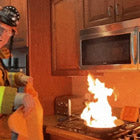 Fire
Fire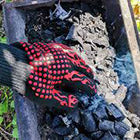 Safety
Safety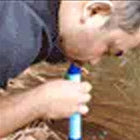 Survival
Survival Protection
Protection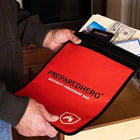 New
New
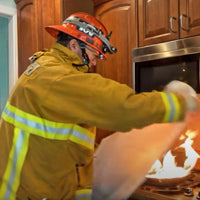 Fire
Fire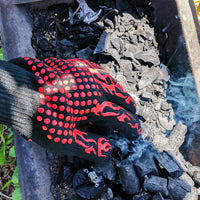 Safety
Safety Survival
Survival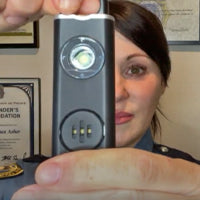 Protection
Protection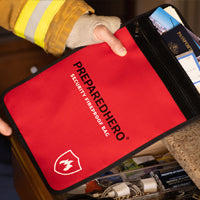 New
New
